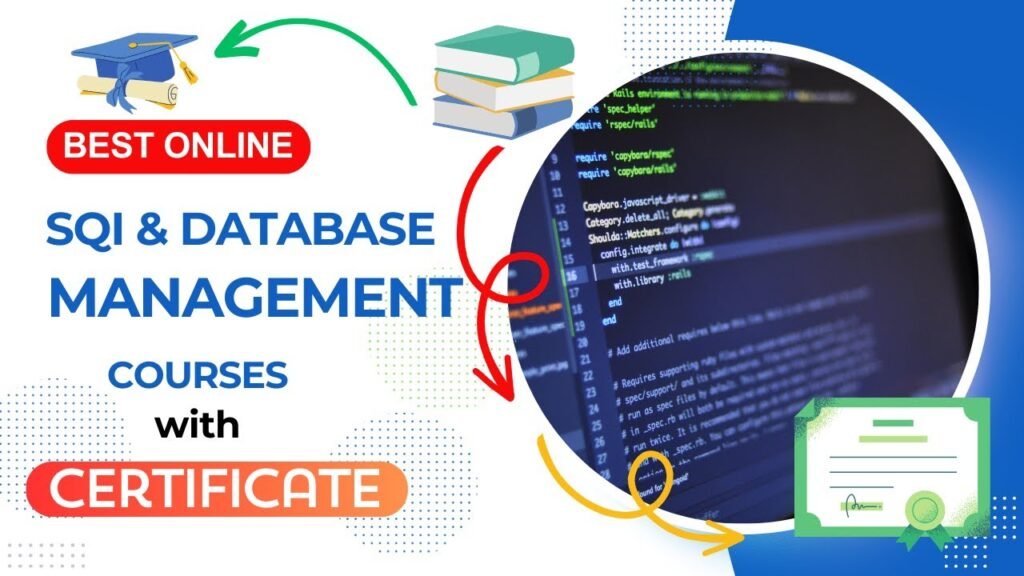Home nursing care represents a fundamental aspect of healthcare delivery that nursing students must master before entering clinical practice. The transition from theoretical knowledge to practical application can be challenging, making at-home practice sessions invaluable for developing confidence and competency. This comprehensive guide offers nursing students safe and effective methods for practising essential procedures in their own homes, bridging the gap between classroom learning and real-world patient care.
The ability to practice basic nursing procedures at home offers students unprecedented flexibility in their learning journey. Unlike traditional clinical settings with time constraints and limited opportunities for repetition, home nursing care practice allows students to develop muscle memory, refine techniques, and build confidence at their own pace. This approach to nursing education has become increasingly important as healthcare systems evolve and more care transitions to home-based settings.
Safe Nursing Skills for Home Practice
Hand Hygiene and Infection Control
Hand hygiene forms the cornerstone of all nursing procedures and represents the most critical skill in home nursing care. Students can practice proper handwashing techniques using the World Health Organization’s six-step method, timing each wash for the required 20-40 seconds. Create a dedicated practice area near a sink with antibacterial soap, paper towels, and alcohol-based hand sanitiser.
Practice scenarios should include hand hygiene before and after patient contact, before aseptic procedures, after contact with body fluids, and after touching patient surroundings. Students can use fluorescent hand lotion under UV light to visualise areas commonly missed during hand washing, providing immediate feedback on the effectiveness of their technique.
Vital Signs Assessment
Measuring vital signs represents a fundamental component of home nursing care that students can safely practice on family members or willing volunteers. Blood pressure measurement requires proper cuff sizing, correct arm positioning, and accurate interpretation of the reading. Practice identifying Korotkoff sounds and understanding the significance of systolic and diastolic readings.
Temperature measurement involves understanding different routes (oral, axillary, temporal) and their appropriate applications. Students should practice using various thermometer types while considering factors that influence accuracy, such as recent food or beverage consumption when taking oral temperatures.
Pulse assessment involves evaluating the rate, rhythm, and strength at multiple sites, including radial, carotid, and apical locations. Respiratory rate counting requires subtle observation techniques to avoid alerting the patient, which might alter their natural breathing patterns.
Also Read: A Guide to Mobility and Support Techniques for Bedridden Patients
Documentation and Record Keeping
Accurate documentation represents a crucial skill in home nursing care that students can practice extensively at home. Create mock patient charts and practice recording vital signs, observations, and interventions using proper medical terminology and abbreviations. Focus on the distinction between objective and subjective data recording, legal documentation requirements, and error correction procedures.
Students should practice various documentation formats including narrative notes, SOAP (Subjective, Objective, Assessment, Plan) notes, and standardized care plans. Understanding the legal implications of documentation, including what to document, when to document, and how to maintain patient confidentiality, remains essential for professional practice.

Basic Physical Assessment
Physical assessment skills form the foundation of home nursing care and can be practised safely using systematic approaches. Head-to-toe assessment techniques include inspection, palpation, percussion, and auscultation methods. Students can practice on family members while learning to distinguish between normal and abnormal findings.
Respiratory assessment involves observing chest movement, listening to breath sounds, and identifying patterns of respiratory activity. Cardiovascular assessment includes heart sound identification, pulse point location, and circulation checks. The neurological assessment encompasses consciousness level evaluation, pupil response testing, and basic reflex checks.
Medication Administration Principles
While students cannot practice actual medication administration at home, they can master the “Five Rights” of medication administration: right patient, right medication, right dose, right route, and right time. Practice calculating dosages, converting units, and understanding medication interactions using practice scenarios and calculation worksheets.
Students should familiarize themselves with common medication administration routes, proper storage requirements, and safety considerations. Understanding medication classifications, contraindications, and adverse effects prepares students for safe home nursing care practice.
DIY Tools and Simulation Techniques for Home Nursing Care
Creating Practice Equipment
Developing effective simulation tools for home nursing care practice requires creativity and resourcefulness. Students can create IV insertion practice arms using pool noodles, balloons, and tubing to simulate veins. This allows repeated practice of needle insertion techniques, though actual IV starts require clinical supervision.
Blood pressure cuffs can be practised on family members, stuffed animals, or even chair arms to develop the proper technique. Stethoscope usage becomes second nature through repeated practice listening to heart sounds, breath sounds, and blood pressure readings.
Technology Integration of Home Nursing Care
Modern home nursing care education benefits significantly from the integration of technology. Virtual reality applications provide immersive learning experiences, while mobile applications offer medication reference guides, dosage calculators, and anatomical references. Online simulation programs allow students to practice decision-making scenarios and critical thinking skills.
Video resources enable students to review procedures repeatedly, pause for detailed examination, and compare their techniques with established standards. Many nursing schools provide access to online learning platforms that complement home practice sessions.
Family Member Involvement
Engaging family members in home nursing care practice sessions provides realistic scenarios while building communication skills. Family members can serve as standardized patients for assessment practice, vital sign measurement, and therapeutic communication exercises. This approach helps students develop bedside manner and patient interaction skills.
However, students must obtain informed consent, explain procedures clearly, and ensure the comfort of family members throughout practice sessions. Establishing boundaries and maintaining professionalism during home practice prepares students for clinical environments.
Safety Precautions and Limitations
Scope of Practice Boundaries
Understanding the scope of practice limitations remains crucial for safe home nursing care practice. Students should never attempt invasive procedures, administer medication, or perform complex interventions without proper supervision and authorisation. Home practice focuses on foundational skills and theoretical application rather than advanced procedures.
Certain procedures requiring sterile technique, specialized equipment, or patient-specific considerations should only be practised in controlled clinical environments. Students must recognise when procedures exceed their current level of competency and seek appropriate guidance.
Infection Control at Home
Maintaining infection control standards during home nursing care practice requires adaptation of clinical protocols to home environments. Students should designate specific areas for practice, ensure that proper hand hygiene facilities are available, and dispose of practice materials properly.
Personal protective equipment usage should be practiced even in non-clinical settings to develop proper donning and doffing techniques. Understanding when PPE is required and selecting appropriate protection levels prepares students for diverse clinical scenarios.
Emergency Preparedness
Students practising home nursing care procedures should understand emergency response protocols and recognize when immediate medical attention is required. While practising on family members, students must know how to respond to adverse reactions, sudden illness, or injury.
Basic first aid knowledge, emergency contact information, and clear communication protocols ensure safe practice environments. Students should never practice procedures that could potentially cause harm or exceed their level of training.

Educational Course Integration
Structured Learning Approach
Effective home nursing care education requires structured approaches that combine theoretical knowledge with practical application. Alison’s comprehensive Diploma in Nursing and Patient Care provides systematic skill development frameworks that perfectly complement home practice sessions. This free course explores the key day-to-day responsibilities of a nurse in various working environments, covering essential areas such as patient hygiene, health and safety measures for nurses, dietary therapy, and physical examination procedures.
Students benefit from organized learning modules that progress from basic to advanced skills, providing clear milestones and achievement markers. The Alison diploma course structure helps students identify areas requiring additional practice and provides comprehensive resources for skill refinement across multiple nursing specialities.
Assessment and Feedback
Regular assessment during home nursing care practice ensures skill development and identifies areas for improvement. Self-assessment tools, peer review opportunities, and instructor feedback mechanisms enable students to track their progress and maintain high standards.
The Alison Diploma in Nursing and Patient Care offers interactive assessment features, with a requirement to score 80% or higher to pass each module assessment. This CPD accredited program offers personalized feedback opportunities and comprehensive evaluation methods that help students measure their competency in crucial areas like vital signs measurement, patient hygiene protocols, and health and safety standards for healthcare professionals.
Also Read: Essential First Aid Skills for Nurses. Free Online First Aid Certification Course
Clinical Preparation
Home nursing care practice serves as essential preparation for clinical rotations by building confidence, developing muscle memory, and reducing anxiety. Students who practice consistently at home demonstrate improved performance during clinical evaluations and adapt more quickly to hospital environments.
The Alison diploma curriculum focuses specifically on practical nursing skills including advanced principles of patient care, environmental health considerations, and the relationship between nursing practices and patient outcomes. This comprehensive approach ensures that students develop skills that translate directly to patient care settings, covering everything from basic human needs assessment to the operation of patient care equipment.
Benefits of At-Home Nursing Care Practice
Flexibility and Accessibility
Home nursing care practice offers unparalleled flexibility, accommodating diverse student schedules and learning preferences. Students can practice procedures multiple times, focus on challenging skills, and learn at their own pace without time constraints typical of clinical settings.
This accessibility ensures that students from various backgrounds and circumstances can develop essential skills regardless of transportation limitations, work schedules, or family obligations. The democratization of nursing education through home practice opportunities promotes inclusivity and supports student success.
Cost-Effective Learning
Practising home nursing care procedures at home significantly reduces educational costs by minimizing laboratory fees, equipment expenses, and transportation costs. Students can create effective learning environments using readily available materials and basic supplies.
Alison’s free Diploma in Nursing and Patient Care provides cost-effective access to high-quality educational content, expert instruction, and comprehensive resources that support skill development without financial barriers. As part of a community of over 45 million learners, students can access CPD-accredited courses that cover essential nursing competencies, including patient hygiene, physical examination procedures, and health and safety measures – all at no cost.
Confidence Building
Repeated practice in comfortable, low-stress environments helps build confidence that translates to improved clinical performance. Students who practice home nursing care procedures regularly demonstrate reduced anxiety, improved communication skills, and better patient interactions during clinical rotations.
The ability to make mistakes, repeat procedures, and refine techniques without patient safety concerns allows students to develop competency at their own pace. This confidence foundation supports lifelong learning and professional development throughout nursing careers.
Family Education Opportunities
Home nursing care practice sessions provide opportunities to educate family members about health maintenance, disease prevention, and basic care techniques. Students can teach family members proper handwashing, vital sign monitoring, and emergency response procedures.
This educational component enhances family health outcomes while providing students with valuable teaching experience that proves beneficial in professional practice. The ability to communicate health information clearly and effectively represents a crucial nursing competency.

Conclusion
Home nursing care practice represents an invaluable component of nursing education, bridging theoretical knowledge and clinical application. Through systematic skill development, the implementation of appropriate safety measures, and structured learning approaches, students can develop competency and confidence in essential nursing procedures.
The integration of home practice with comprehensive educational resources, such as the specialized course available at https://bit.ly/3Fo7Ai9, ensures students receive thorough preparation for clinical practice and professional success. This combination of self-directed learning, family involvement, and expert guidance creates optimal conditions for skill development and knowledge retention.
As healthcare continues to evolve toward community-based and home nursing care models, students who master these fundamental skills gain a competitive advantage in the job market and provide better patient outcomes. Investing in structured home practice yields dividends throughout nursing careers, fostering professional growth and enhancing patient safety in all care settings.
Students should take advantage of home practice opportunities while maintaining appropriate safety boundaries and seeking guidance when necessary. The foundation built through consistent, thoughtful practice at home creates the confidence and competency necessary for successful nursing careers dedicated to patient care excellence.




